| Reports of visits to Japan of POWs |
Former Aus POWs visit Japan
at the second invitation of the Japanese Government
5 Former Australian POWs and their family members visited Japan from November 27 to December 5, 2011. It was the second visiting group on the invitation of the Japanese Government. They were captured in various places, such as Singapore, Malay, Rabaul and Timor. Ms.Lorna Johnston, who had been sent to Yokohama from Rabaul, was only one woman in the group members. Other three men were sent to Thai-Burma Railway and another had a peculiar experience in Timor as a member of special unit. We were impressed that ex-POWs told us their terrible experience, getting over their difficult feelings. They were warmheartedly welcomed in everywhere and seemed to find a beam of hope to meet many Japanese who were different from the prewar generation, especially children.

|
Visitors' profiles
|
Ms. Lorna Johnston(96) She lives in Oakland, New Zealand. She was one of 18 Australian nurses who were captured in Rabaul in January 1942. They were sent to Japan aboard Naruto Maru in July 1942 and were held in the civilian internment camps in Yokohama until September 1945. She was only one woman and the oldest of the visiting group. See below about the Australian nurses. |
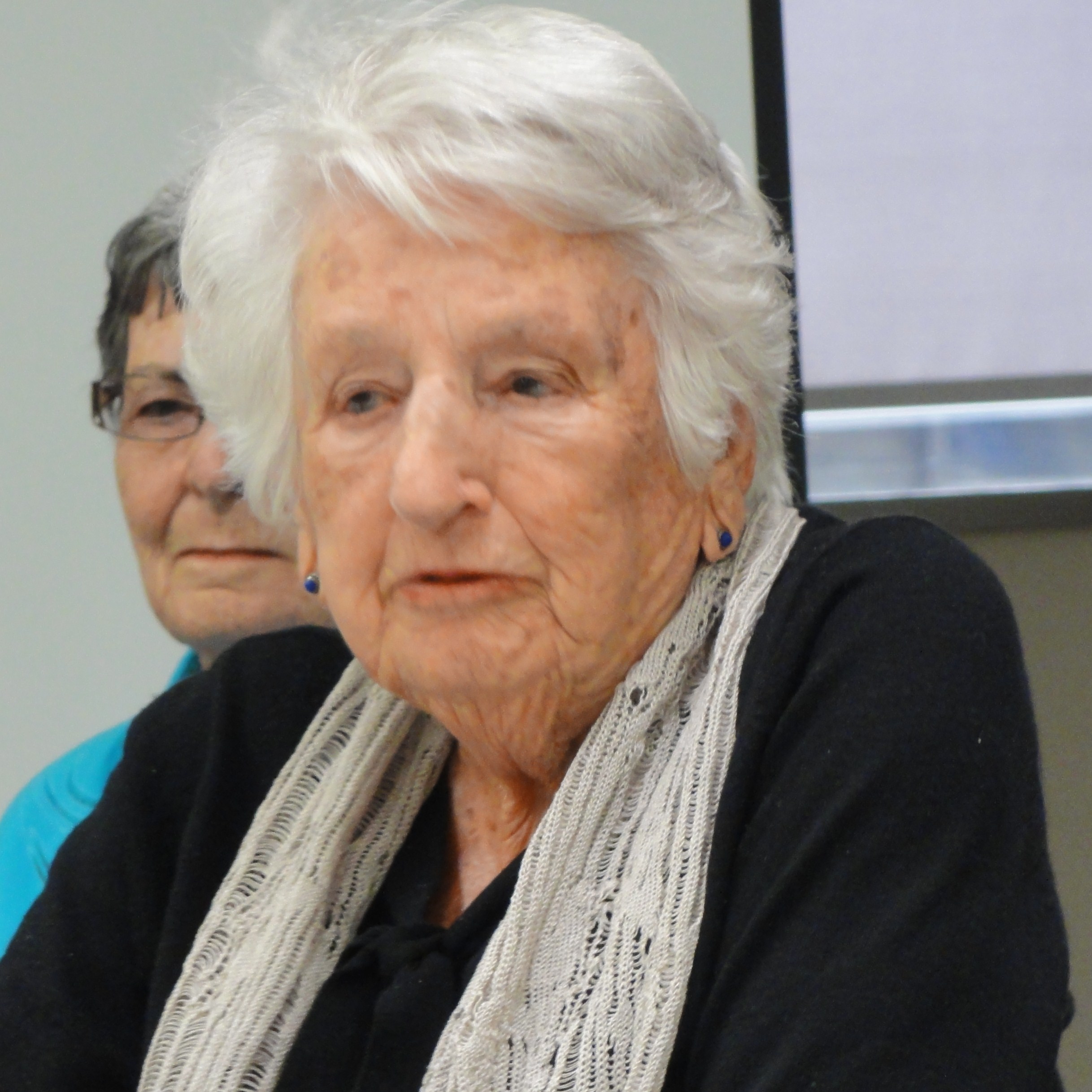
|
|
Mr. Arthur Gamble(93) He lives in West Australia. |

|
|
Mr. Barton Richardson (91) He lives in New South Wales. |
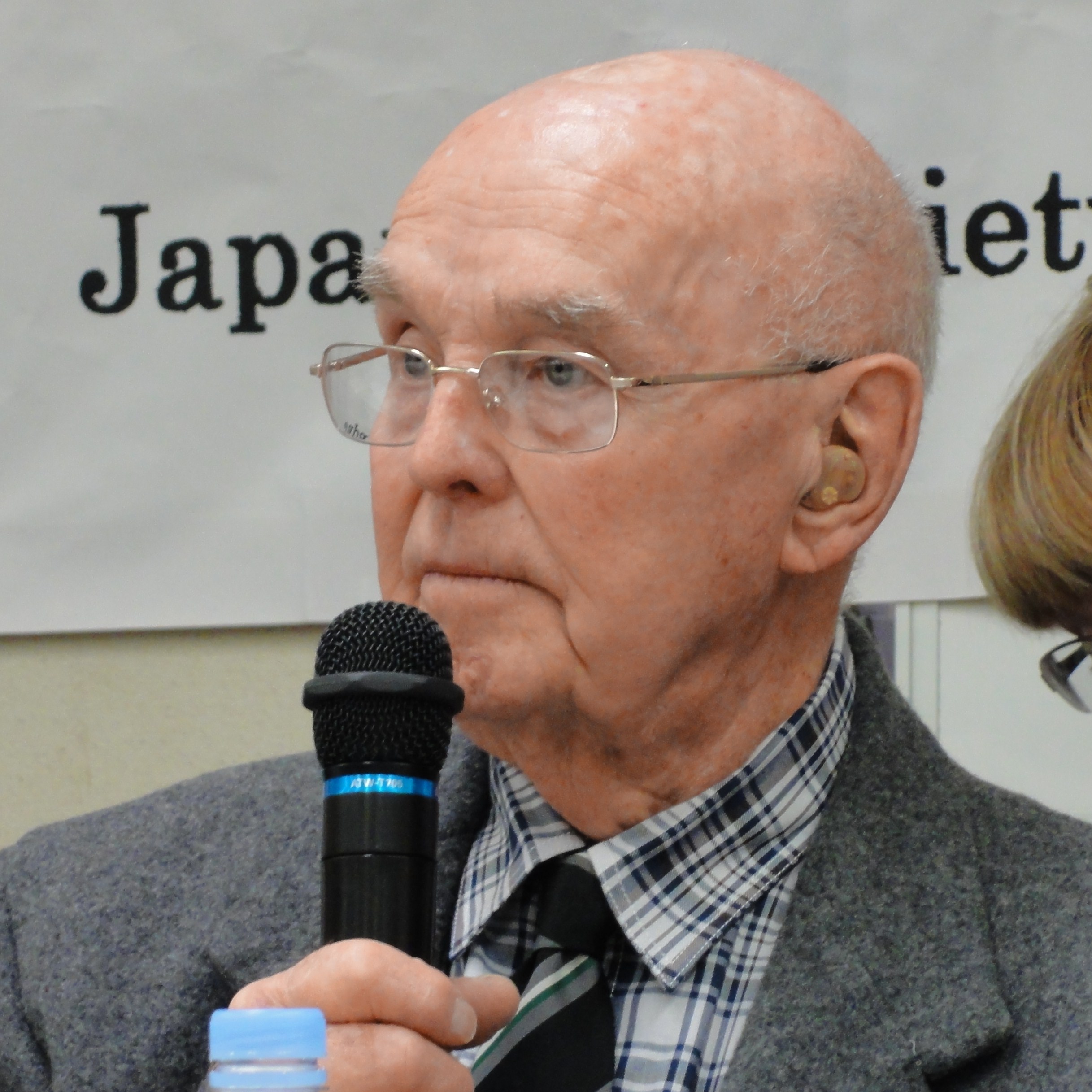
|
|
Mr. Alfred James Ellwood (89) He lives in Victoria. |

|
|
Mr. David Barrett (89) He lives in Queensland. |
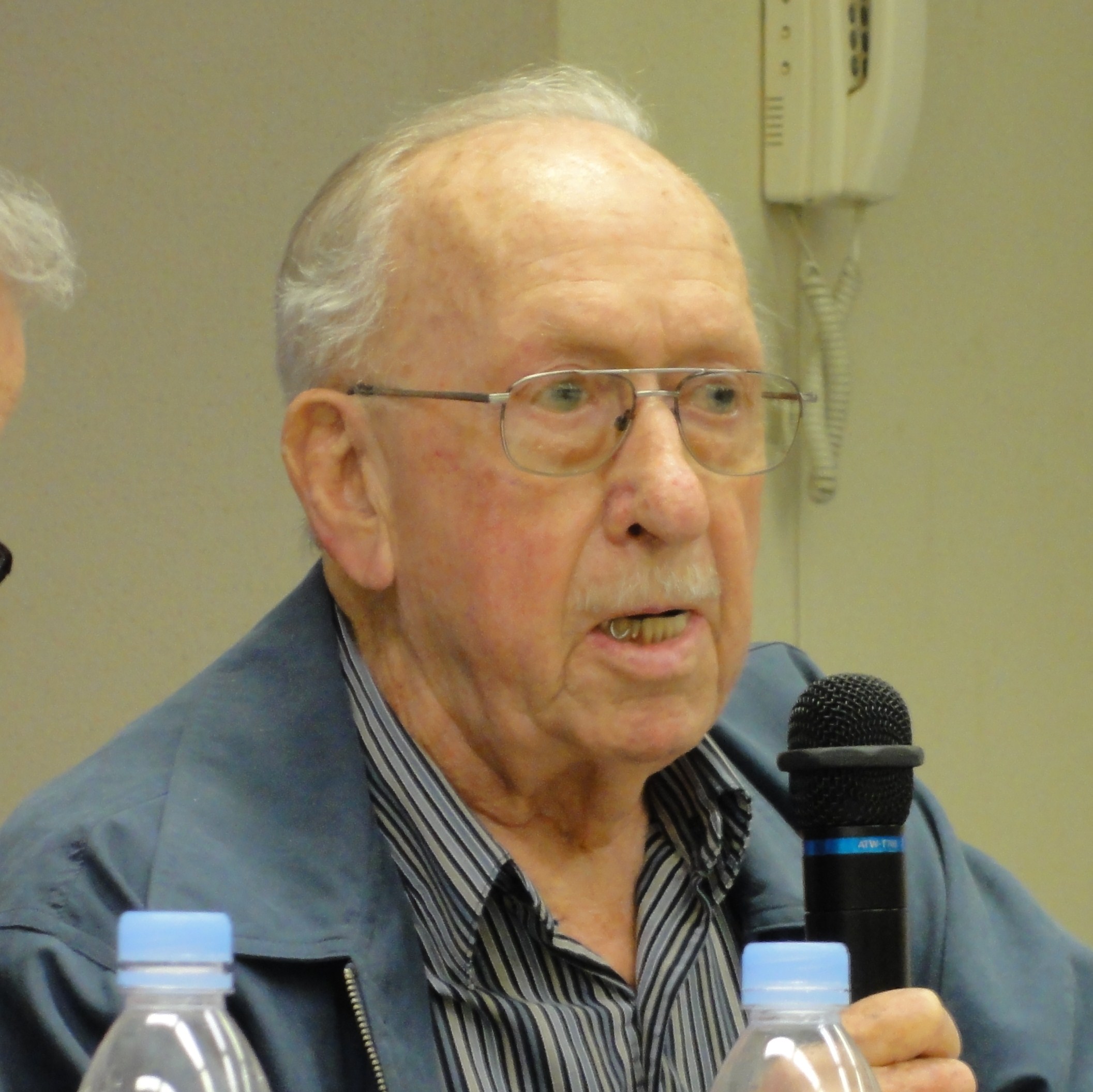
|
Itinerary
| 27 Nov. (Sun) | Arrive at Narita Airport |
| 28 Nov. (Mon) | Exchange Program in Tokyo / Afternoon tea hosted by Australian Ambassador |
| 29 Nov. (Tue) | Sightseeing in Tokyo / Courtesy visit the foreign minister / Meeting with government officials |
| 30 Nov. (Wed) | Visit the Commonwealth War Cemetery, Yokohama / Meeting with Japanese Citizens |
| 1 Dec. (Thu) | Visit to place of memorable significance to participants (Tokyo, Saitama, Yokohama, Hyogo, Okayama, Hiroshima) |
| 2 Dec. (Fri) | Visit to place of memorable significance to participants / Afternoon to Kyoto |
| 3 Dec. (Sat) | Visit Ryozen Kannon Temple / Sightseeing in Kyoto |
| 4 Dec. (Sun) | Sightseeing in Nara / Visit Tomigaoka Catholic Church |
| 5 Dec. (Mon) | Sightseeing in Osaka / Depart Kansai Airport |
29 (Tue) Nov.: Courtesy visit Foreign Minister Koichiro Gemba
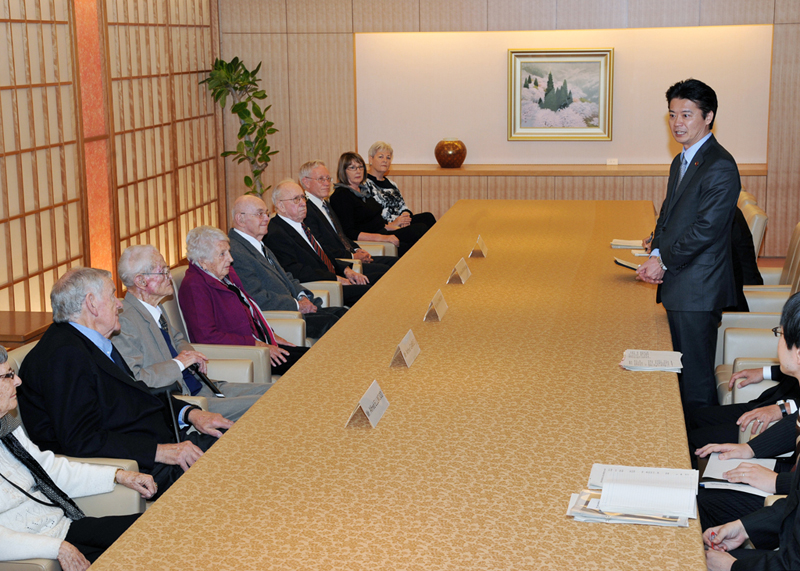 |
Foreign Minister Koichiro Gemba reiterated Japan's feelings of deep remorse and heartfelt apology for the tremendous damages and sufferings Japan inflicted on the many people involved during the war, including former Australian POWs who had suffered a tragic experience. (Photo by MOFA) |
30 (Wed) Nov.
Visit the Commonwealth War Cemetery in Yokohama
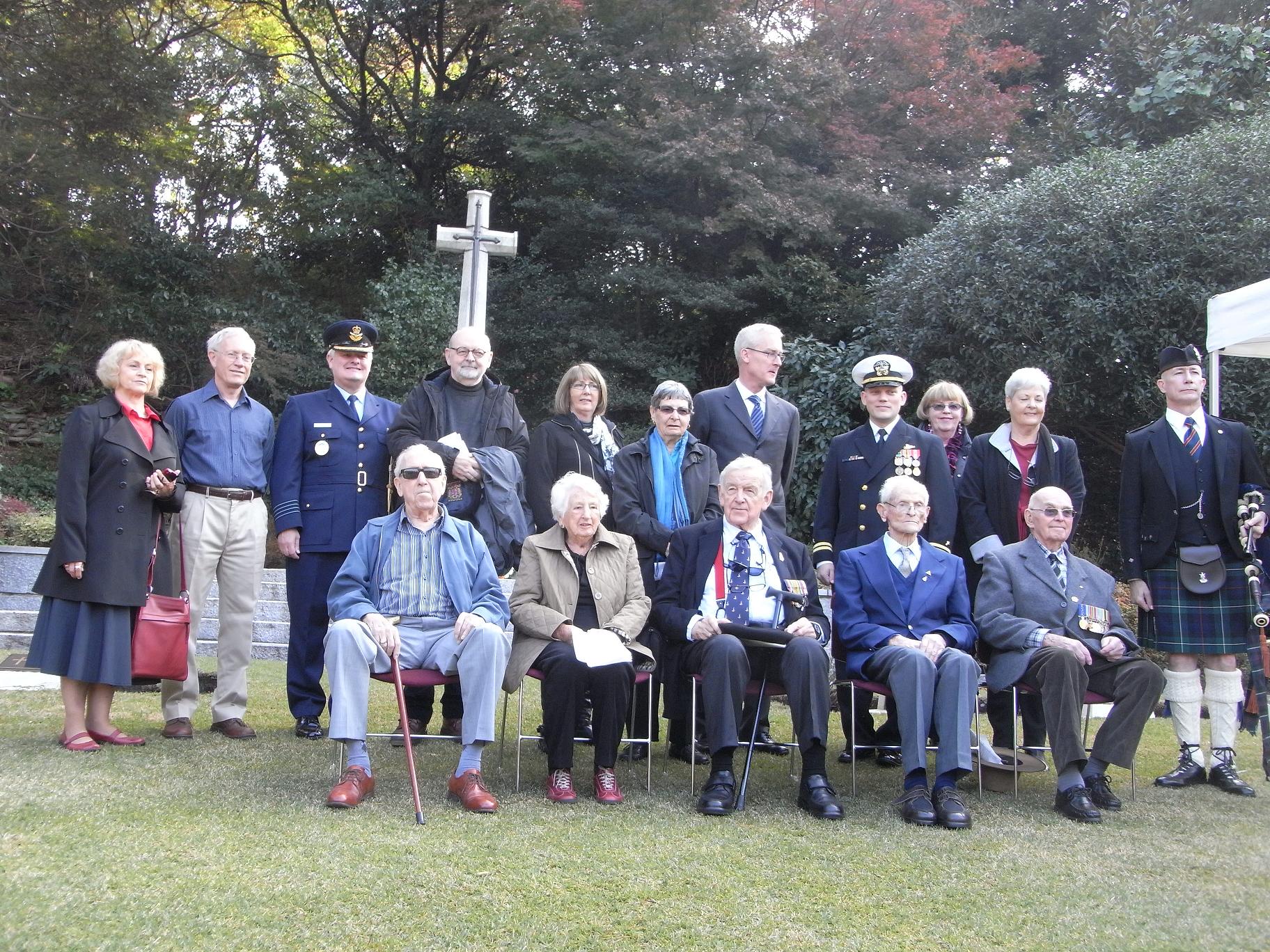 |
A memorial service was held at the Australian section at 9:30 with attendance of the ambassador and an attache from the Australian Embassy. Each of the former POWs offered a wreath under the cross while a bagpiper was playing. They seemed to be so emotional. After the ceremony, they enjoyed tea and sweets warm-heartedly prepared by the Embassy. |
Friendship meeting with Japanese citizens in Tokyo >>See the details
Place: Tokyo Azabudai Seminar House of Osaka University of Economics & Law
Organizer: Japanese Society for Friendship with ex-POWs and Families
Cooperated by: POW Research Network Japan (POWRNJ)
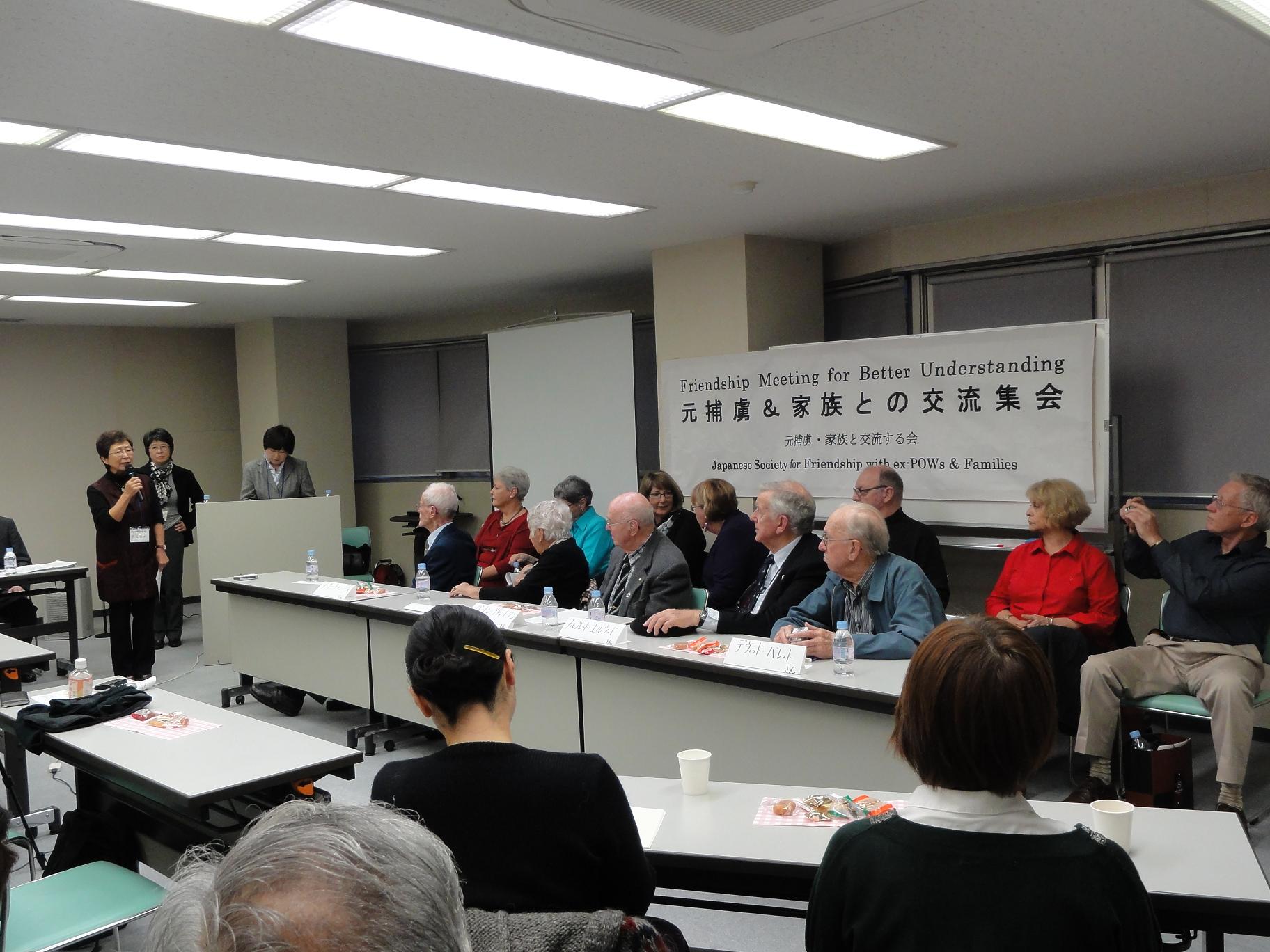 |
Before ex-POWs arrived, we had a short study meeting on their background showing pictures. Aiko Utsumi lectured about Thai-Burma Railway and Mayumi Komiya lectured about Australian nurses. About 55 people gathered including the guests. We appreciate that ex-POWs talked their experience, getting over their difficult feelings. The family members also talked their opinion actively. It was very fruitful meeting. |
1 (Thur) -2 (Fri) Dec.
Ms. Lorna Johnston's visit to Yokohama >>See the details
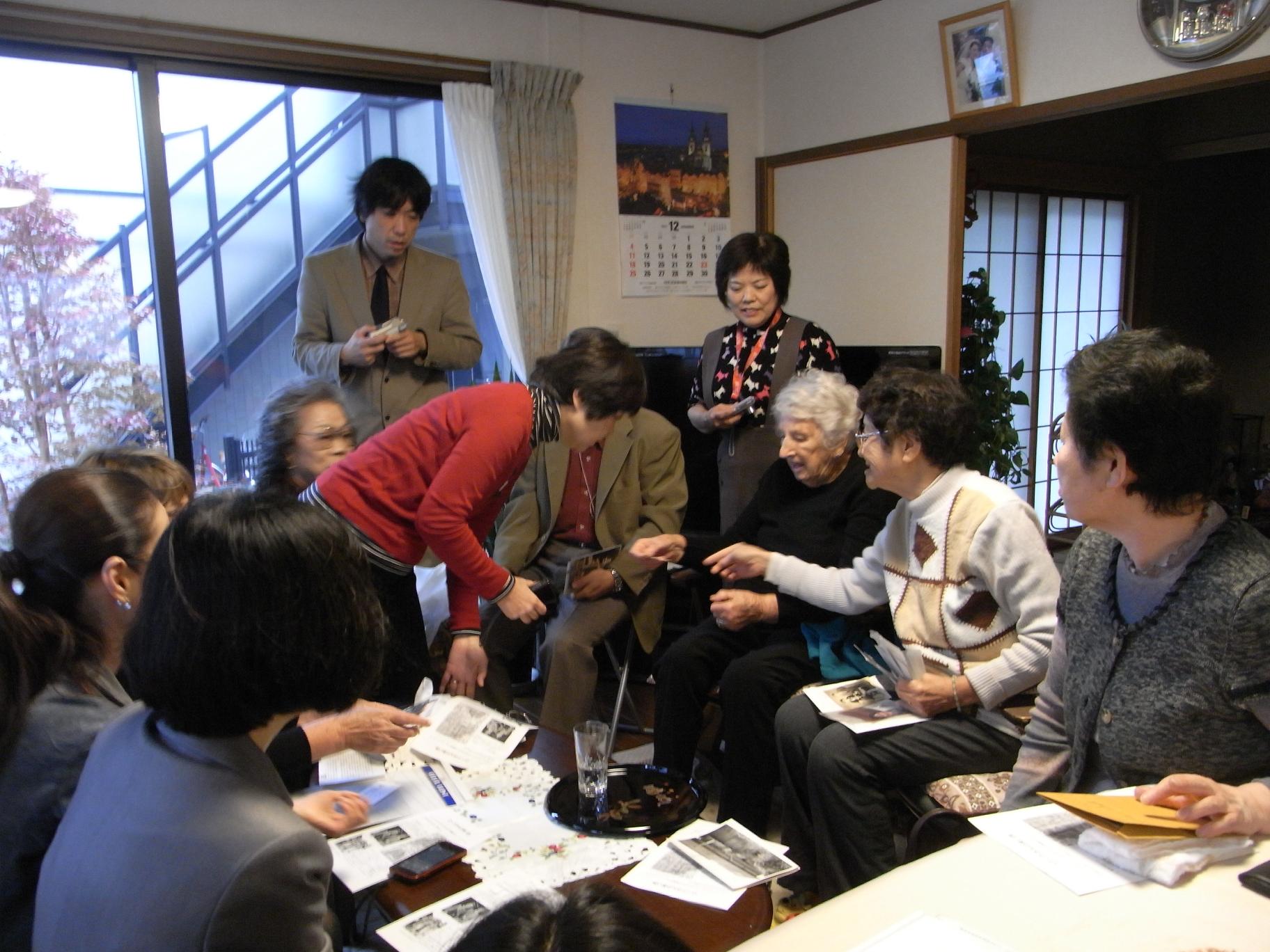 |
On 1 December Ms. Lorna Johnston visited the former site of her internment in Totsuka in Yokohama City, where she had been held during the war. After taking a walk around the area of the camp (at present a residential area), we called at the residence of Ms. Yamamura in the neighborhood, where local residents knowledgeable about the war-time period had gathered. One of them was a daughter-in-law of the Obasan's (an elderly lady), who used to cook for the nurses while others were still children in those days but remembered the nurses in the camp--------- |
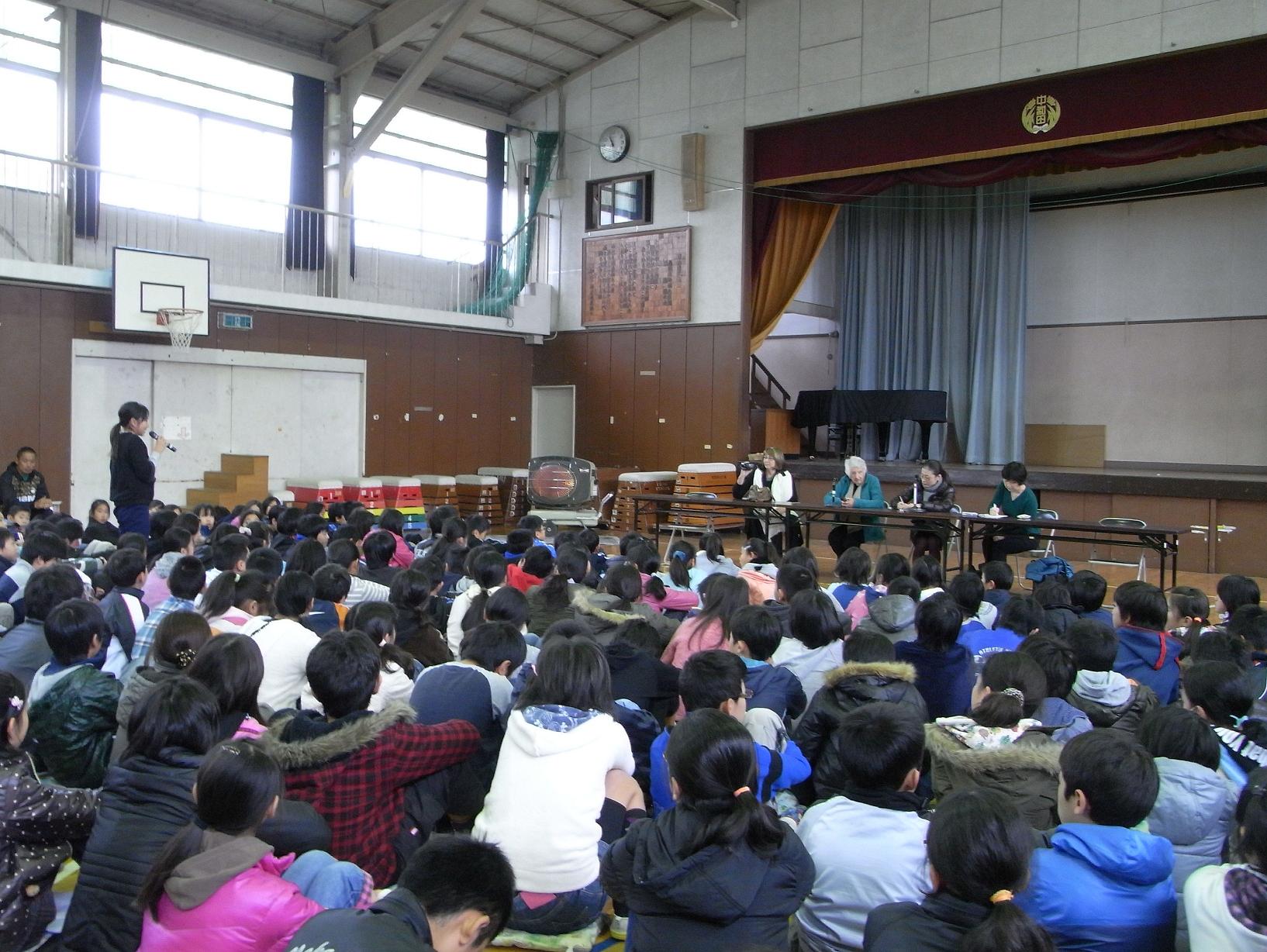 |
On 2 December Lorna made a speech on her PW experience in the Nakawada Elementary School. Her tone was steady, unlike expected from a 96-year-old woman. She spoke of being captured in Rabaul and brought to Japan, not being allowed to board an exchange ship, and suffering from cold and hunger during her prolonged confinement till being librated after the war ended. The pupils showed a keen interest in her story and, after she spoke, asked one question after another for a full hours--------. |
Mr. David Barrett's visit to Kurashiki and Okayama
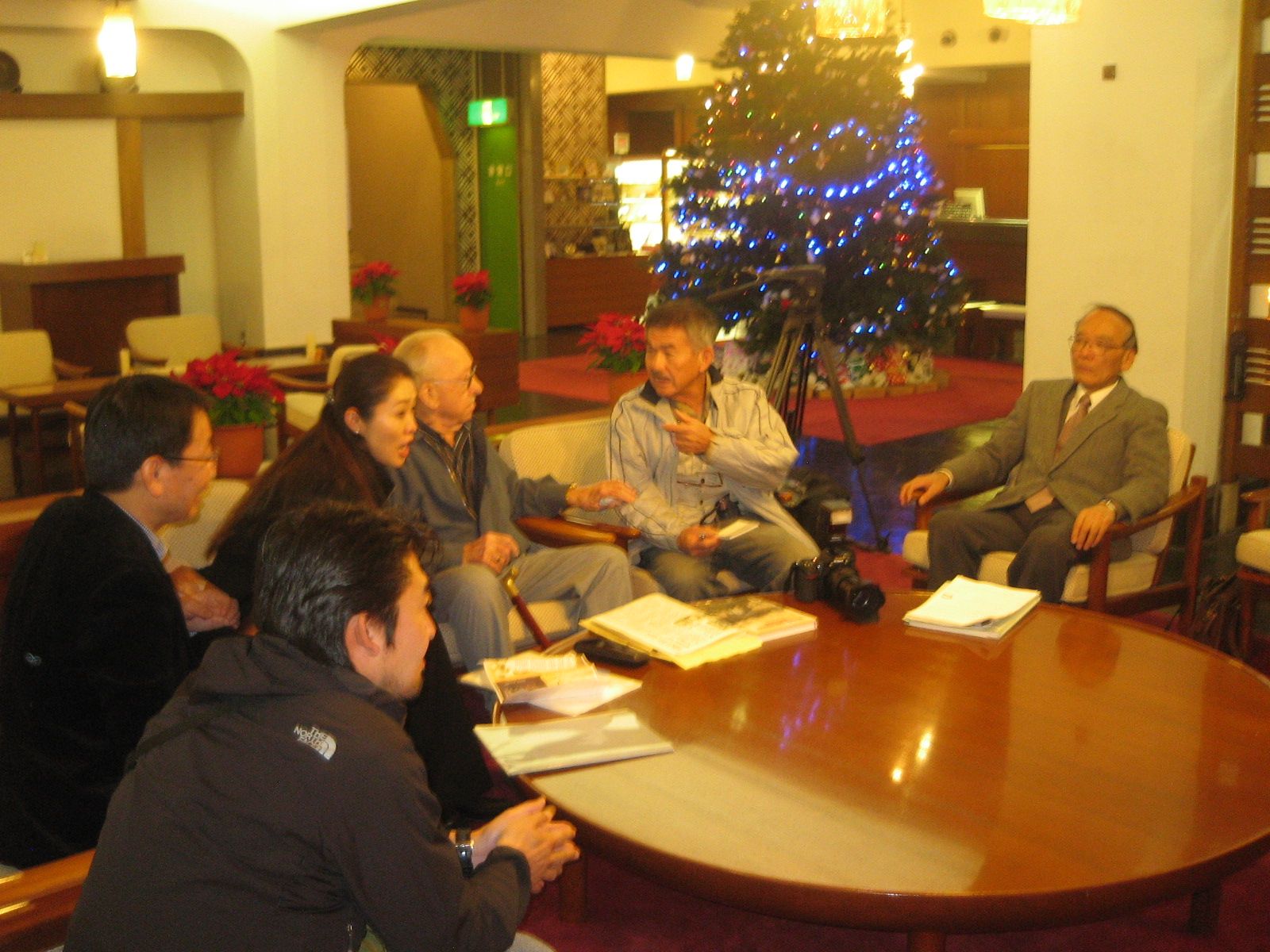 |
On 1 December, Mr. Barrett visited Kurashiki and met some Japanese friends (Photo). He visited a grave of Mr. Takashi Nagase who had worked as an interpreter on the Thai-Burma Railway during the war, and worked with Mr.Barrett for the War Graves Searching Party along the railway just after the war. He devoted his life to atonement and reconciliation between Japanese and ex-POWs, and passed away in June 2011. |
3 (Sat) -4 (Sun) Dec.: in Kyoto and Nara
Visit Ryozen Kannon Temple in Kyoto on 3 Saturday
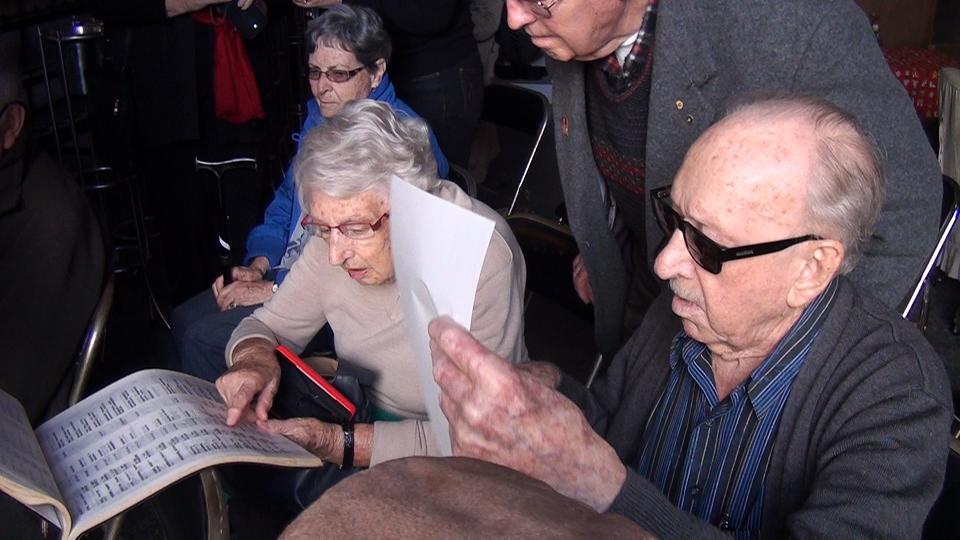 |
This temple has been keeping rosters and individual cards of the Allied POWs and civilian internees held by the Japanese during the world war 2. While reading them, Mr. Barrett happened to find a roster of his regiment. He said "They were all my friends!!" and couldn't let go his hold of the roster for some time. |
Visit Tomigaoka Church in Nara on 4 Sunday
This church was established by Father Tony Glynn who was an Australian and devoted his energies to friendship and reconciliation between Australia and Japan. He came to Japan, sympathizing with Father Lionel T. Marsden who had been a POW chaplain on the Thai-Burma Railway during the war, and after the war, got up to build a bridge of love between Australia and Japan, getting over his anger and hatred against Japan. Their magnificent works were introduced in a documentary film titled as "Bridge of Love" by Shigeki Chiba in 1999.
5 ex-POWs and their family members visited Tomigaoka Church and talked with Father Paul Glynn who was Tony Glynn's brother and happened to visit Japan from Australia. After that, they saw a film "Bridge of Love" in Glynn Hall that was built for Father Glynn. More than one hundred citizens gathered in the hall, but the ex-POWs had to leave in the middle of the film because of their tight schedule. It was regrettable that they couldn't talk with the citizens.
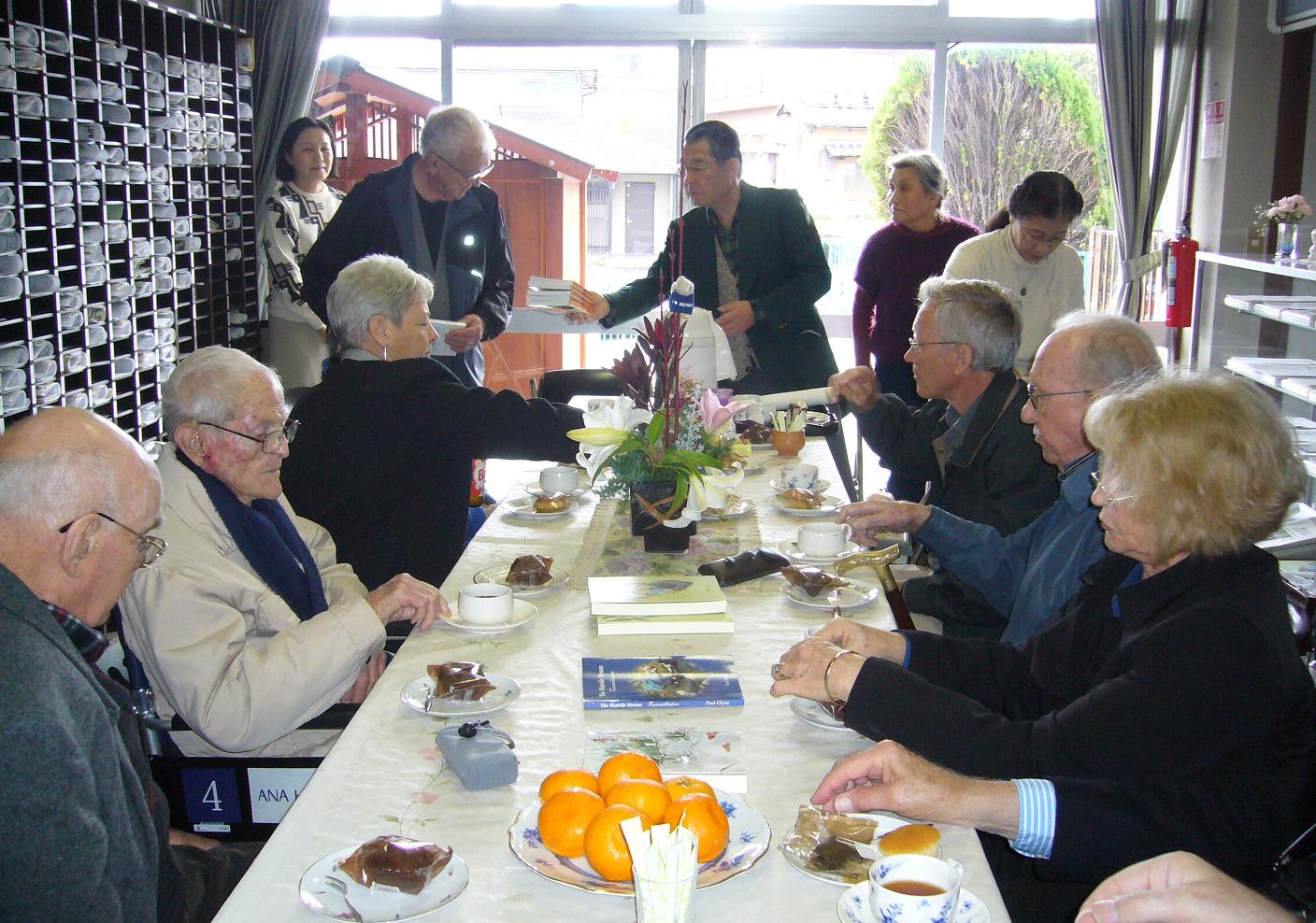 |